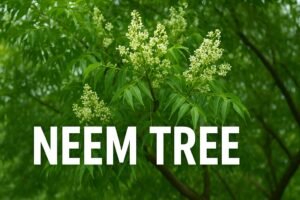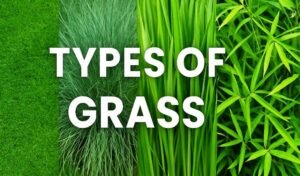King Cobra Snake
Introduction to the King Cobra Snake
The King Cobra Snake (Ophiophagus hannah) is a remarkable and widely respected snake, renowned for its extraordinary size as the world’s longest venomous snake, sometimes growing up to 18 feet in length. This powerful reptile, often regarded as a symbol of strength and reverence, is primarily found in Southeast Asia. What sets the King Cobra apart from other snakes is its unique diet, which consists mainly of other snakes, both venomous and non-venomous. This behavior is reflected in its scientific name, Ophiophagus, meaning “snake eater.” With its characteristic hood, threatening hiss, and potent neurotoxic venom, the King Cobra is highly adapted for survival in its natural habitat. While it is often feared, the King Cobra plays a vital role in maintaining ecological balance by regulating snake populations, highlighting its importance in the ecosystem.

Species Profile: King Cobra
| Attribute | Details |
|---|---|
| Snake Name | King Cobra |
| Scientific Name | Ophiophagus hannah |
| Regional Names | Indian Languages: Hindi: नागराज (Naagraj) – King of Snakes Malayalam: രാജവെമ്പാല (Rajavembala) – King Cobra Marathi: नागराज (Naagraj), वडलो (Vadalo), गिम (Gim), दिवड नागीण (Divad Nagin) Kannada: ಕಾಳಿಂಗ ಸರ್ಪ (Kalinga Sarpa) Tamil: கருநாகம் (Karunagam), இராச நாகம் (Rasa Nagam) Telugu: కింగ్ కోబ్రా (King Cobra) Assamese: ৰাজফেঁটী সাপ (Rajphetee Xap), শঙ্খচূড় (Shankhachur), পদ্ম গোখরা (Padma Gokhara), রাজ গোখরা (Raj Gokhara) Oriya: ଅହିରାଜ (Ahiraja) Sanskrit: काळिङ्गसर्प (Kalinga Sarpa) Southeast Asian Languages: Thai: งูจงอาง (ngu jong aang), งูบองหลา (ngu bong laa – Southern Thailand), งูเห่าดง (ngu haow dong – Southern Thailand), งูสิงหัวขาบ (ngu singh hua kaab – Northern Thailand) Burmese: မြွေဟောက်ဘုရင် (Mway Hauk Bhuyin) Khmer: ពស់វែកភ្នំ (Poah Veak Phnom) – Mountain Cobra Lao: ງູເຫົ່າ (ngu hao) – often used generally for cobras, but applies to king cobra as well. Vietnamese: Rắn hổ chúa (Rắn hổ chúa) Malay/Indonesian: Ular Raja, Ular Tedung Selar (for Ophiophagus bungarus, a species recently split from O. hannah in the Sunda Shelf region) |
| Physical Description | Length: Up to 18 feet, Color: Olive green, brown, black, or tan with pale yellow crossbands. |
| Habitat | Dense forests, bamboo thickets, swamps, and agricultural lands across Southeast Asia and India. |
| Diet | Primarily feeds on other snakes, including venomous species; occasionally lizards and rodents. |
| Behavior | Solitary and territorial; known for raising its head and spreading its hood when threatened. |
| Venomous or Non-Venomous | Venomous |
| Venom Type | Neurotoxic |
| Venom Effects on Prey | Paralyzes and kills prey by disrupting the nervous system. |
| Venom Effects on Humans | Can cause respiratory failure and death if not treated promptly; highly dangerous. |
| Common or Rare Species | Relatively common in its native range but considered vulnerable due to habitat loss. |
| Life Span | 20 years in the wild |
| Mating & Reproduction | Breeds once a year; females lay 20-40 eggs and guard them until they hatch. |
Introduction to Snakes of King Cobra
General Characteristics and Anatomy
The King Cobra stands out not just for its size but also for its unique physical characteristics. Its hood, which it spreads when threatened, is a defining feature. Unlike other cobras, the King Cobra has an elongated vertebra, allowing it to lift a significant portion of its body off the ground. Its fangs are relatively short but deliver potent neurotoxic venom that can incapacitate prey swiftly. The snake’s eyesight is among the best in the snake world, enabling it to detect moving prey from nearly 100 meters away.
The Role of Snakes in the Ecosystem
Snakes, including the King Cobra, play a vital role in the ecosystem. They help control the population of prey species, particularly rodents and other small mammals, which can become pests if their numbers grow unchecked. By preying on other snakes, the King Cobra helps maintain a balance in the food chain, preventing the overpopulation of certain species.
Common Myths and Misconceptions About Snakes
Many people fear snakes due to common myths and misconceptions. One prevalent myth is that all snakes are aggressive and will chase humans, which is far from the truth. Most snakes, including the King Cobra, avoid confrontation with humans and only attack when provoked or threatened. Another misconception is that venomous snakes, like the King Cobra, have the sole intention of harming humans. In reality, snakes use their venom primarily for hunting and self-defense.
Habitat and Distribution
Explanation:
King Cobras are primarily found in forests, particularly rainforests, bamboo thickets, and mangrove swamps. These habitats provide the dense cover and abundant prey necessary for their survival. The King Cobra’s geographical range extends across Southeast Asia, including countries like India, Bangladesh, Myanmar, Thailand, Laos, Cambodia, Vietnam, Malaysia, Indonesia, and the Philippines. They are also found in southern China. Despite their wide distribution, King Cobras are most commonly associated with dense forests where they can find ample prey and avoid human interaction.
| Habitat Type | Geographical Distribution |
|---|---|
| Forests | India, Southeast Asia, Southern China |
| Deserts | Not typically found in desert environments |
| Wetlands | Occasionally found in wetlands and mangrove swamps, particularly in Southeast Asia |
| Agricultural Lands | Found in regions where forests intersect with human habitation, especially in rural areas. |
Snake Behavior
Hunting and Feeding Habits
The King Cobra is a skilled predator that relies on its acute sense of smell and excellent vision to track down its prey. It primarily hunts during the day, which is unusual for snakes. Its diet consists almost exclusively of other snakes, including venomous species like kraits and other cobras. When food is scarce, it may also consume small mammals or lizards. The King Cobra uses its powerful neurotoxic venom to subdue its prey quickly, preventing any chance of escape or retaliation.
Mating and Reproduction
King Cobras are solitary creatures, coming together only during the mating season. Males engage in combat to win over a female, and the victor earns the right to mate. After mating, the female lays her eggs in a nest made of leaves and twigs, which she constructs herself. Remarkably, the female King Cobra guards her eggs until they hatch, a rare behavior among snakes. The eggs typically hatch after 60-80 days, and the mother leaves the nest shortly before the hatchlings emerge.
Defense Mechanisms
The King Cobra’s most notable defense mechanism is its ability to raise its body and spread its hood, making it appear larger and more threatening to potential predators. When threatened, it can deliver multiple bites, injecting a large quantity of venom. The snake’s venom is primarily neurotoxic, causing paralysis and potentially death in its victims. Additionally, the King Cobra’s coloration provides excellent camouflage in its natural habitat, helping it avoid detection by both predators and prey.
First Aid and Medical Treatment for King Cobra Bites
First Aid Steps:
- Remain Calm and Assess the Situation: Stay calm and avoid making sudden movements, which could provoke the snake further.
- Prioritize Safety: Step back slowly, giving the snake plenty of space to retreat. Avoid any attempt to handle or harm the snake.
- Identify the Snake (If Possible): If safe to do so, try to remember the snake’s appearance to inform medical personnel.
- Contact Professional Help: Seek immediate medical attention by calling emergency services or heading to the nearest hospital equipped with antivenom.
- Prevent Future Encounters: Keep your surroundings clean, avoid tall grasses, and be cautious when moving debris or firewood.
Global Impact of King Cobra Bites
King Cobra bites, though relatively rare due to the snake’s reclusive nature, have a significant global impact. In regions where King Cobras are prevalent, their bites can lead to severe medical emergencies due to the potency of their venom. In rural areas of India and Southeast Asia, where medical facilities may be limited, fatalities from King Cobra bites are more common. However, with the availability of antivenom and proper medical care, the survival rate has improved significantly. Educating the public on snakebite prevention and first aid is crucial in reducing the mortality rate associated with King Cobra bites.
If You Encounter a King Cobra on Your Property
- Remain Calm and Assess the Situation: Do not panic; King Cobras usually avoid confrontation with humans.
- Ensure Safety: Ensure that children and pets are kept away from the area where the snake was spotted.
- Identify the Snake (If Possible): If it’s safe, try to observe the snake from a distance to identify it, but do not approach it.
- Contact Professional Help: Call local wildlife authorities or a snake rescue expert to handle the situation.
- Prevent Future Encounters: Seal potential entry points in your home, keep your yard clear of debris, and avoid leaving food sources that might attract snakes.
- Educate Yourself and Others: Learn about local snake species and share information on how to coexist safely with them.
Tips for Snake Enthusiasts
- How to Safely Observe Snakes in the Wild: Maintain a safe distance, avoid sudden movements, and respect the snake’s space. Use binoculars for a closer view without disturbing the animal.
- Tips for Aspiring Herpetologists: Study local wildlife regulations, gain knowledge from reputable sources, and practice ethical handling and observation of reptiles. Volunteering with wildlife conservation groups can also provide valuable experience.
Interesting Facts About the King Cobra
- Unique Diet: Unlike most snakes, the King Cobra predominantly preys on other snakes. It can even consume other venomous species, which makes it a top predator in its ecosystem.
- Intelligent Hunter: The King Cobra is known for its intelligence, showing the ability to learn and adapt to new hunting techniques, making it a formidable predator.
- King Cobra Venom: The venom of a King Cobra is not only neurotoxic but also contains compounds that can target the heart and respiratory system, making it extremely dangerous.
- Hood Display: The King Cobra’s hood is not just for show; it is a defensive mechanism that makes the snake look larger and more intimidating to potential threats.
- Cultural Significance: In many parts of India and Southeast Asia, the King Cobra is revered and often associated with ancient deities, symbolizing power and protection.
- Vocalization: The King Cobra is one of the few snake species that can “growl.” This low-frequency hiss is used to ward off potential threats.
- Nesting Behavior: Unlike most other snake species, the female King Cobra builds a nest for her eggs and fiercely guards them until they hatch.
- Longest Venomous Snake: The King Cobra holds the record for being the longest venomous snake in the world, capable of growing up to 18 feet in length.
- Conservation Status: The King Cobra is classified as vulnerable due to habitat loss and hunting, highlighting the need for conservation efforts.
- Longevity: King Cobras can live up to 20 years in the wild, which is relatively long for a snake, giving them plenty of time to perfect their hunting skills.
Frequently Asked Questions (FAQ)
1. What is the King Cobra?
The King Cobra (Ophiophagus hannah) is the largest venomous snake in the world, renowned for its size and predatory habits. It is primarily found in Southeast Asia and is unique for its diet, which consists mostly of other snakes.
2. How long can a King Cobra grow?
King Cobras can reach lengths of up to 18 feet, making them the longest venomous snakes on the planet.
3. Where are King Cobras typically found?
King Cobras inhabit dense forests, bamboo thickets, mangrove swamps, and agricultural areas across Southeast Asia, including regions in India, Thailand, Malaysia, and Indonesia.
4. What does the King Cobra eat?
The King Cobra’s diet mainly includes other snakes, both venomous and non-venomous. They may also occasionally eat small mammals or lizards when other prey is scarce.
5. Is the King Cobra venomous?
Yes, the King Cobra is highly venomous. Its venom is neurotoxic, which means it attacks the nervous system, leading to paralysis and death in its prey.
6. How dangerous is a King Cobra bite to humans?
A King Cobra bite is extremely dangerous and can be fatal without prompt medical treatment. It can cause respiratory failure and death if antivenom is not administered quickly.
7. What should I do if I encounter a King Cobra?
If you encounter a King Cobra, stay calm and slowly back away to give it space. Avoid any attempt to handle or harm the snake. Contact local wildlife authorities for assistance.
8. What cultural significance does the King Cobra have?
In many Southeast Asian cultures, the King Cobra is revered and often symbolizes power and protection. It is sometimes associated with ancient deities and spiritual beliefs.
9. How does the King Cobra protect itself?
The King Cobra defends itself by raising the front part of its body, spreading its hood, and emitting a loud hiss. It can strike and deliver multiple venomous bites if threatened.
10. What is unique about the King Cobra’s reproductive behavior?
One of the unique behaviors of the King Cobra is that the female builds a nest for her eggs and guards them until they hatch, showing a level of parental care that is rare among snakes.
11. How long do King Cobras typically live?
King Cobras can live up to 20 years in the wild, which is relatively long for a snake species.
12. What is the conservation status of the King Cobra?
The King Cobra is listed as a vulnerable species, primarily because of the destruction of its natural habitats and the threat of hunting. Protecting this species through conservation initiatives is essential for its continued survival.
13. Can King Cobras be kept as pets?
Due to their size, venom, and specialized care needs, King Cobras are not suitable as pets and should only be handled by trained professionals.
14. Why is the King Cobra called “Ophiophagus”?
The name “Ophiophagus” means “snake eater” in Greek, referring to the King Cobra’s diet, which primarily consists of other snakes.
15. How can we contribute to King Cobra conservation?
Supporting conservation efforts, protecting natural habitats, and educating others about the ecological importance of King Cobras are essential steps in preserving this species.
Related Information
| Topic | Link |
|---|---|
| History of Snakes: Evolution, Habitats, and Survival | Click here |
| The Big Four Snakes of India | Click here |
| What Are Reptiles? | Click here |
| Cobra Snake: All Information | Click here |
| Russell’s Viper | Click here |
| Common Krait: All Information | Click here |
| Saw-Scaled Viper: All Information | Click here |


